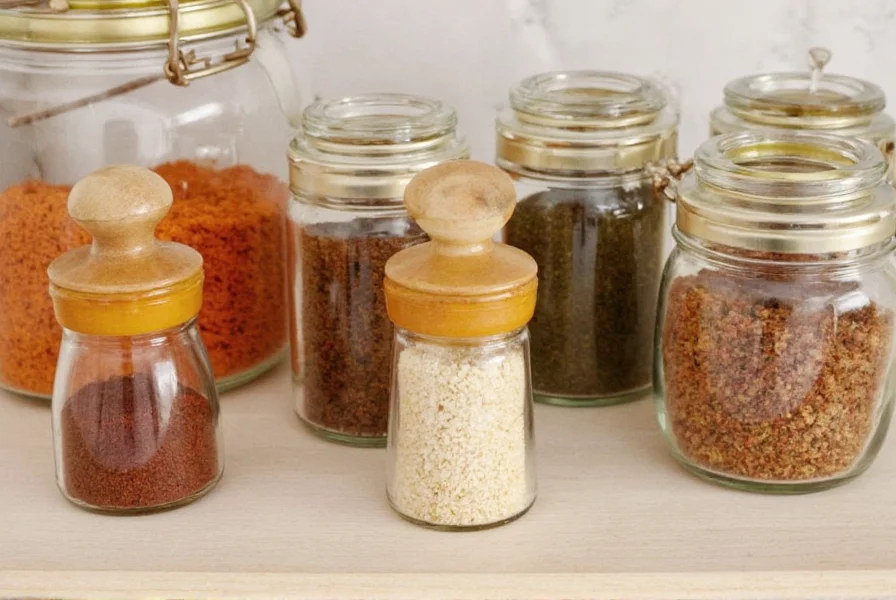Umami Food Examples: A Flavorful Journey for Spices Enthusiasts
Table of Contents
What is Umami?
Umami, often described as the 'fifth taste,' is a savory, deep flavor that adds richness and complexity to food. Unlike sweet, sour, salty, or bitter, umami is subtle but powerful. It's what makes foods like aged cheese, soy sauce, and mushrooms so deliciously satisfying.
The term 'umami' was coined by Japanese chemist Kikunae Ikeda in 1908, who identified glutamate as the compound responsible for this unique taste. Today, we know that many natural ingredients contain high levels of glutamate or other compounds that enhance umami, making it a key player in both home cooking and professional cuisine.

Why Umami Matters in Cooking
Understanding umami can transform your cooking experience. It helps create more balanced, complex flavors and enhances the overall eating experience. Whether you're a seasoned chef or an amateur enthusiast, incorporating umami-rich ingredients into your meals can elevate your dishes from good to unforgettable.
But how do you spot umami? Look for foods with deep, meaty, or fermented qualities. These are often packed with naturally occurring glutamates or nucleotides that contribute to the umami flavor. Let’s dive into some of the most popular umami food examples.

Umami Food Examples
Here are some of the best umami food examples that you can easily incorporate into your diet:
- Shiitake Mushrooms: Known for their rich, earthy flavor, shiitakes are a powerhouse of umami. They’re great in soups, stews, and even on their own.
- Worcestershire Sauce: This tangy, fermented condiment adds a deep umami layer to sauces, marinades, and even cocktails.
- Parmesan Cheese: Aged parmesan has a concentrated umami profile, making it a must-have for pasta dishes and salads.
- Kombu (Seaweed): Often used in dashi broth, kombu contributes a clean, oceanic umami that forms the base of many Japanese dishes.
- Dried Porcini Mushrooms: These dried mushrooms have a strong, nutty flavor and are perfect for adding depth to risottos and sauces.
- Bone Broth: Rich in collagen and amino acids, bone broth is a natural source of umami that supports digestion and boosts flavor.
- Tomatoes: Especially when cooked down, tomatoes offer a mild but distinct umami quality that enhances tomato-based dishes.
- Black Garlic: Fermented garlic with a mellow, sweet, and umami-rich flavor, great for spreads and sauces.
These foods are not only delicious but also incredibly versatile. Whether you're using them as a base for a dish or as a finishing touch, they bring out the best in every bite.
Spice Combinations That Enhance Umami
While umami itself is a flavor, it can be amplified by pairing it with the right spices. Here are some spice combinations that work wonders with umami-rich foods:
| Umami Food | Recommended Spice | Flavor Pairing |
|---|---|---|
| Shiitake Mushrooms | Sesame Oil | Earthy and nutty |
| Parmesan Cheese | Black Pepper | Sharp and aromatic |
| Bone Broth | Garlic | Warm and comforting |
| Tomatoes | Oregano | Herbaceous and vibrant |
| Black Garlic | Thyme | Earthy and floral |
These pairings not only enhance the umami flavor but also add layers of complexity that make each dish more memorable. Experiment with these combinations to find your favorite flavor profiles.

Buying Guide for Umami-Packed Ingredients
If you're looking to boost the umami content of your meals, here’s a quick guide to help you choose the best ingredients:
Shiitake Mushrooms
- Features: Earthy, meaty, and full of umami.
- Advantages: Versatile and easy to cook with.
- Use Cases: Soups, stews, stir-fries, and roasts.
- Target Audience: Home cooks and chefs looking to enhance flavor naturally.
- Suitable Occasions: Weeknight dinners, holiday feasts, and casual gatherings.
Worcestershire Sauce
- Features: Fermented and tangy with a deep umami punch.
- Advantages: Adds depth to sauces, marinades, and even cocktails.
- Use Cases: Grilled meats, salad dressings, and soups.
- Target Audience: Flavor enthusiasts and adventurous cooks.
- Suitable Occasions: Parties, barbecues, and gourmet dinners.
Black Garlic
- Features: Sweet, mellow, and intensely umami.
- Advantages: Adds a unique, complex flavor without being overpowering.
- Use Cases: Spreads, sauces, and roasted vegetables.
- Target Audience: Gourmet lovers and health-conscious individuals.
- Suitable Occasions: Special occasions, dinner parties, and creative cooking sessions.
When purchasing umami-rich ingredients, look for high-quality, organic options whenever possible. Freshness and proper storage can make a big difference in flavor intensity and shelf life.
Conclusion
Umami is more than just a taste—it's a game-changer in the world of cooking. By understanding which foods are naturally high in umami, you can create dishes that are more flavorful, satisfying, and deeply enjoyable. From shiitake mushrooms to black garlic, there are countless ways to bring out the richness of umami in your meals.
Whether you're a spice enthusiast or a curious cook, experimenting with umami food examples can open up a whole new world of flavor. So next time you're in the kitchen, remember: a little umami goes a long way!










 浙公网安备
33010002000092号
浙公网安备
33010002000092号 浙B2-20120091-4
浙B2-20120091-4